Multiple Pseudo-Plastic Appearance of the Dynamic Fracture in Quasi-Brittle Materials
Abstract
1. Introduction
2. Outlook of the Quasi-Brittle Materials Modelling in Dynamics
Classical Concrete Material Model
3. Materials and Methods
3.1. Materials, Specimens and Tests
3.2. DAMP Material Model: The Stress–Damage Propagation Interaction
3.3. Model Application: Constant Loading-Rate Response
3.4. Structural Solution Comparison between DAMP and Classical Models
4. Results
5. Discussion
6. Concluding Remarks
Author Contributions
Funding
Conflicts of Interest
References
- Griffith, A.A. The phenomena of rupture and flow in solids. Philos. Trans. R. Soc. Lond. A 1920, 221, 582–593. [Google Scholar]
- Lam, K.Y.; Phua, S.P. Multiple crack interaction and its effect on stress intensity factor. Eng. Fract. Mech. 1991, 40, 585–592. [Google Scholar] [CrossRef]
- Ravi-Chandar, K. Dynamic fracture of nominally brittle materials. Int. J. Fract. 1998, 90, 83–102. [Google Scholar] [CrossRef]
- Malvar, L.; Crawford, J.; Wesevich, J.; Simons, D. A plasticity concrete material model for DYNA3D. Int. J. Imp. Eng. 1997, 19, 847–893. [Google Scholar] [CrossRef]
- Riedel, W.; Thoma, K.; Hiermaier, S.; Schmolinske, E. Penetration of reinforced concrete by BETA-B-500, numerical analysis using a new macroscopic concrete model for Hydrocodes. In Proceedings of the International Symposium on the Interaction of the Effects of Munitions with Structures, Berlin/Strausberg, Germany, 3–7 May 1999; pp. 315–322. [Google Scholar]
- Borrvall, T.; Riedel, W. The RHT concrete model in LS-DYNA. In Proceedings of the 8th European LS-DYNA Users Conference, Strasbourg, France, 23–24 May 2011. [Google Scholar]
- Noll, W.; Truesdell, C. The Non-Linear Field Theories of Mechanics; Springer: New York, NY, USA, 1965. [Google Scholar]
- Unosson, M. Numerical Simulation of Penetration and Perforation of High Performance Concrete with 75 mm Steel Projectile; User Report; Defence Research Establishment; Weapons and Protection Division: Tumba, Sweden, 2000. [Google Scholar]
- Hansson, H.; Skoglund, P.; Unosson, M. Structural Protection for Stationary/Mobile Tactical Behaviours; Swedish Defence Research Agency: Tumba, Sweden, 2001.
- Sjöberg, J.; Schill, M.; Hilding, D.; Yi, C.; Nyberg, U.; Johansson, D. Computer simulations of blasting with precise initiation. In Proceedings of the ISRM International Symposium—EUROCK 2012, Stockholm, Sweden, 28–30 May 2012. [Google Scholar]
- Guo, Y.B.; Gao, G.F.; Jing, L.; Shim, V.P.W. Response of high-strength concrete to dynamic compressive loading. Int. J. Imp. Eng. 2017, 108, 114–135. [Google Scholar] [CrossRef]
- Conrad, M. Craters in Concrete Slabs due to Detonation—Drawback of Material Models with a Mohr-Coulomb Yield Surface. EPJ Web Conf. 2015, 94, 04019. [Google Scholar] [CrossRef]
- Leelavanichkul, S.; Brannon, R. Survey of Four Damage Models for Concrete; Sandia Reports 2009–5544; Sandia National Laboratories: Livermore, CA, USA, 2009. [Google Scholar] [CrossRef]
- Timmel, M.; Kolling, S.; Osterrieder, P.; Du Bois, P.A. A finite element model for impact simulation with laminated glass. Int. J. Imp. Eng. 2007, 34, 1465–1478. [Google Scholar] [CrossRef]
- Chen, W.; Luo, H. Dynamic compressive responses of intact and damaged ceramics from a single split Hopkinson pressure bar experiment. Exp. Mech. 2004, 44, 295–299. [Google Scholar] [CrossRef]
- Liu, X.Q.; Al-Mosawi, A.I.; Li, B. Calibration K&C Concrete Model for UHPC in LS-DYNA. Adv. Mater. Res. 2014, 1081, 254–259. [Google Scholar]
- Riedel, W.; Kawai, N.; Kondo, K. Numerical Assessment for Impact Strength Measurements in Concrete Materials. Int. J. Imp. Eng. 2009, 36, 283–293. [Google Scholar] [CrossRef]
- Cadoni, E.; Labibes, K.; Berra, M.; Giangrasso, M.; Albertini, C. Influence of Aggregate Size on Strain-Rate Tensile Behavior of Concrete. ACI Mater. J. 2001, 98, 220–223. [Google Scholar]
- Cadoni, E.; Forni, D.; Bonnet, E.; Dobrusky, S. Experimental study on direct tensile behaviour of UHPFRC under high strain-rates. Constr. Build. Mater. 2019, 218, 667–680. [Google Scholar] [CrossRef]
- Remennikov, A.; Kaewunruen, S. Impact resistance of reinforced concrete columns: Experimental studies and design considerations. In Proceedings of the 19th Australasian Conference on the Mechanics of Structures and Materials, Christchurch, New Zealand, 29 November–1 December 2006; pp. 817–824. Available online: https://ro.uow.edu.au/engpapers/379 (accessed on 1 December 2006).
- Stone, M.; Koch, D.; Krauthammer, T.; Astarlioglu, S.; Bui, L. Impact Testing of Normal-strength and Ultra-high-performance Concrete Beams; Technical Report to DTRA, CIPPS–TR-006-2013; Center for Infrastructure Protection and Physical Security, University of Florida: Gainesville, FL, USA, 2013. [Google Scholar]
- Liu, K.; Wu, C.; Li, X.; Li, Q.; Fang, J.; Liu, J. A modified HJC model for improved dynamic response of brittle materials under blasting loads. Comp. Geotech. 2020, 123, 103584. [Google Scholar] [CrossRef]
- Levi-Hevroni, D.; Kochavi, E.; Kofman, B.; Gruntman, S.; Sadot, O. Experimental and numerical investigation on the dynamic increase factor of tensile strength in concrete. Int. J. Imp. Eng. 2018, 114, 93–104. [Google Scholar] [CrossRef]
- Hansson, H.; Skoglund, P. Simulation of Concrete penetration in 2D and 3D with the RHT Material Model; Technical Report; FOI Swedish Defence Research Agency; Weapon and Protection, Swedish Defence HQ: Tumba, Sweden, 2002; p. 50.
- Holmqvist, T.; Johnson, G. A computational constitutive model for concrete subjected to large strains, high strain rates, and high pressures. In Proceedings of the 14th International Symposium on Ballistics, Québec, QC, Canada, 26–29 September 1993; pp. 591–600. [Google Scholar]
- Adley, M.D.; Frank, A.O.; Danielson, K.T.; Akers, S.A.; O’Daniel, J.L. The Advanced Fundamental Concrete (AFC) Model; Technical Report ERDC/GSL TR-10-51; U.S. Army Engineer Research and Development Center: Vicksburg, MS, USA, 2010. [Google Scholar]
- International Federation for Structural Concrete (fib). Model Code for Concrete Structures 2010; Ernst & Sohn: Berlin, Germany, 2010. [Google Scholar]
- Kolsky, H. An Investigation of the Mechanical Properties of Materials at Very High Rates of Loading. Proc. Phys. Soc. B 1949, 62, 676. [Google Scholar] [CrossRef]
- Krauthammer, T.; Elfahal, M.M.; Lim, J.; Ohno, T.; Beppu, M.; Markeset, G. Size effect for high-strength concrete cylinders subjected to axial impact. Int. J. Imp. Eng. 2003, 28, 1001–1016. [Google Scholar] [CrossRef]
- Gambarelli, S.; Ozbolt, J. Dynamic fracture of concrete in compression: 3D finite element analysis at meso- and macro-scale. In Proceedings of the 10th International Conference on Fracture Mechanics of Concrete and Concrete Structures FraMCoS-X, Bayonne, France, 24–26 June 2019. [Google Scholar] [CrossRef]
- Albertini, C.; Montagnani, M. Testing Techniques Based on the Split Hopkinson Bar. In Proceedings of the Conference on Mechanical Properties of Materials at High Rates of Strain, Oxford, UK, 2 April 1974; American Inst of Physics: New York, NY, USA, 1974. [Google Scholar]
- Cadoni, E.; Forni, D. Experimental analysis of the UHPFRCs behavior under tension at high stress rate. Eur. Phys. J. Spec. Top. 2016, 225, 253–264. [Google Scholar] [CrossRef]
- Luccioni, B.; Isla, F.; Forni, D.; Cadoni, E. Modelling UHPFRC tension behavior under high strain rates. Cem. Conc. Comp. 2018, 291, 209–220. [Google Scholar] [CrossRef]
- Riganti, G.; Cadoni, E. Numerical simulation of the high strain-rate behavior of quenched and self-tempered reinforcing steel in tension. Mater. Des. 2014, 57, 156–167. [Google Scholar] [CrossRef]
- Bertram, A.; Kalthoff, J.F. Crack Propagation Toughness of Rock for the Range from Low to Very High Crack Speeds. Key Eng. Mater. 2003, 251–252, 423–430. [Google Scholar] [CrossRef]
- Lengliné, O.; Toussaint, R.; Schmittbuhl, J.; Elkhoury, J.E.; Ampuero, J.P.; Tallakstad, K.T.; Santucci, S.; Måløy, K.J. Average crack-front velocity during subcritical fracture propagation in a heterogeneous medium. Phys. Rev. E 2011, 84, 036104. [Google Scholar] [CrossRef]
- Ha, Y.D.; Bobaru, F. Studies of dynamic crack propagation and crack branching with peridynamics. Int. J. Fract. 2010, 162, 229–244. [Google Scholar] [CrossRef]
- Zhao, S.; Zhang, Q. Dynamic Crack Propagation and Fracture Behavior of Pre-cracked Specimens under Impact Loading by Split Hopkinson Pressure Bar. Adv. Mater. Sci. Eng. 2019, 2019, 2383861. [Google Scholar] [CrossRef]
- Zhenguo, T.; Yong, L. Modifications of RHT material model for improved numerical simulation of dynamic response of concrete. Int. J. Imp. Eng. 2010, 37, 1072–1082. [Google Scholar]
- Albertini, C.; Cadoni, E.; Labibes, K. Impact Fracture Process and Mechanical Properties of Plain Concrete by Means of an Hopkinson Bar Bundle. J. Phys. IV 1997, 07, 915–920. [Google Scholar] [CrossRef]
- Cadoni, E. Fracture behaviour of concrete at high strain rate. In Proceedings of the 8th International Conference on Fracture Mechanics of Concrete and Concrete Structures FraMCoS 2013, Toledo, Spain, 10–14 March 2013; pp. 217–227. [Google Scholar]
- Albertini, C.; Cadoni, E.; Labibes, K. Study of the mechanical properties of plain concrete under dynamic loading. Exp. Mech. 1999, 39, 137–141. [Google Scholar] [CrossRef]
- Cadoni, E.; Labibes, K.; Berra, M.; Giangrasso, M.; Albertini, C. High-strain-rate tensile behaviour of concrete. Mag. Conc. Res. 2000, 52, 365–370. [Google Scholar] [CrossRef]
- Cadoni, E.; Labibes, K.; Albertini, C.; Berra, M.; Giangrasso, M. Strain-rate effect on the tensile behaviour of concrete at different relative humidity levels. Mater. Struct. 2001, 34, 21–26. [Google Scholar] [CrossRef]

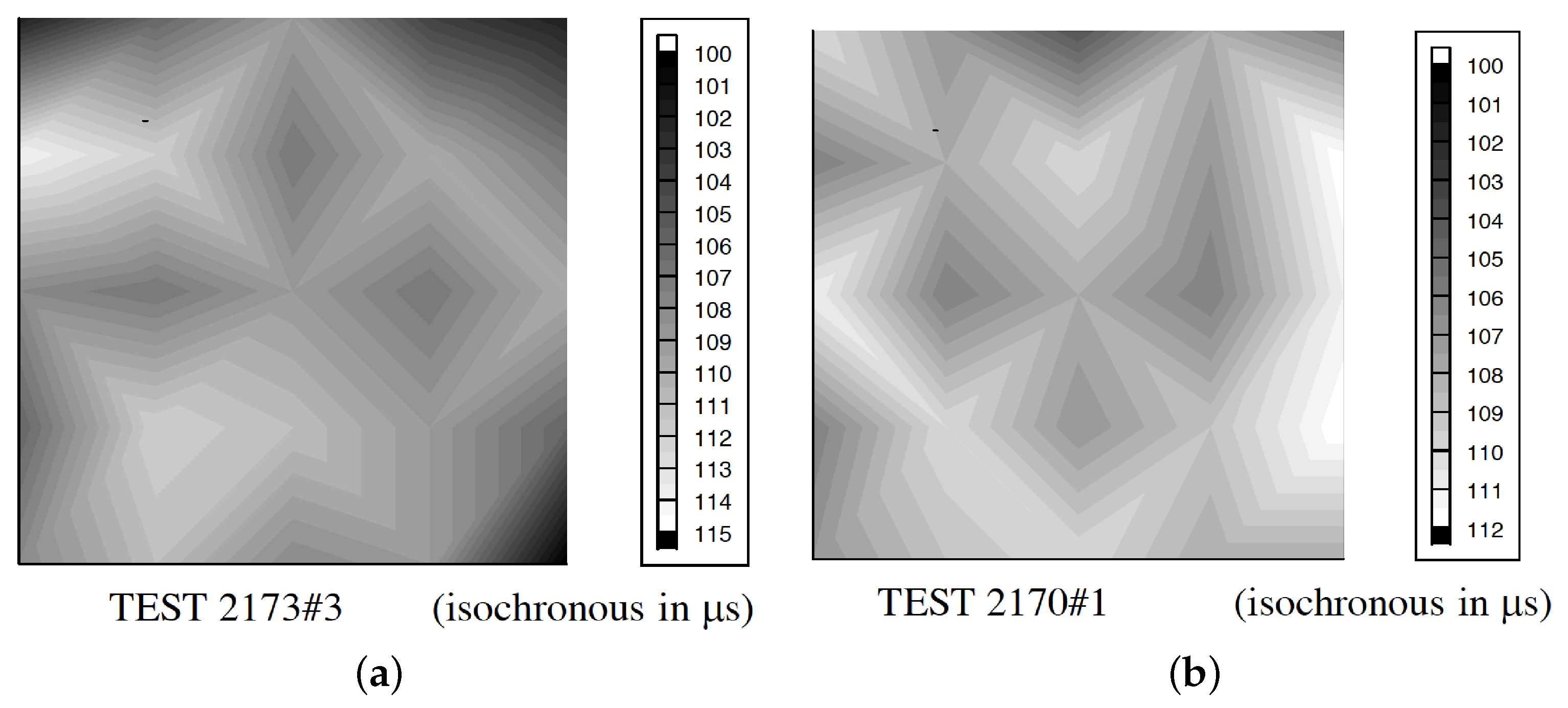
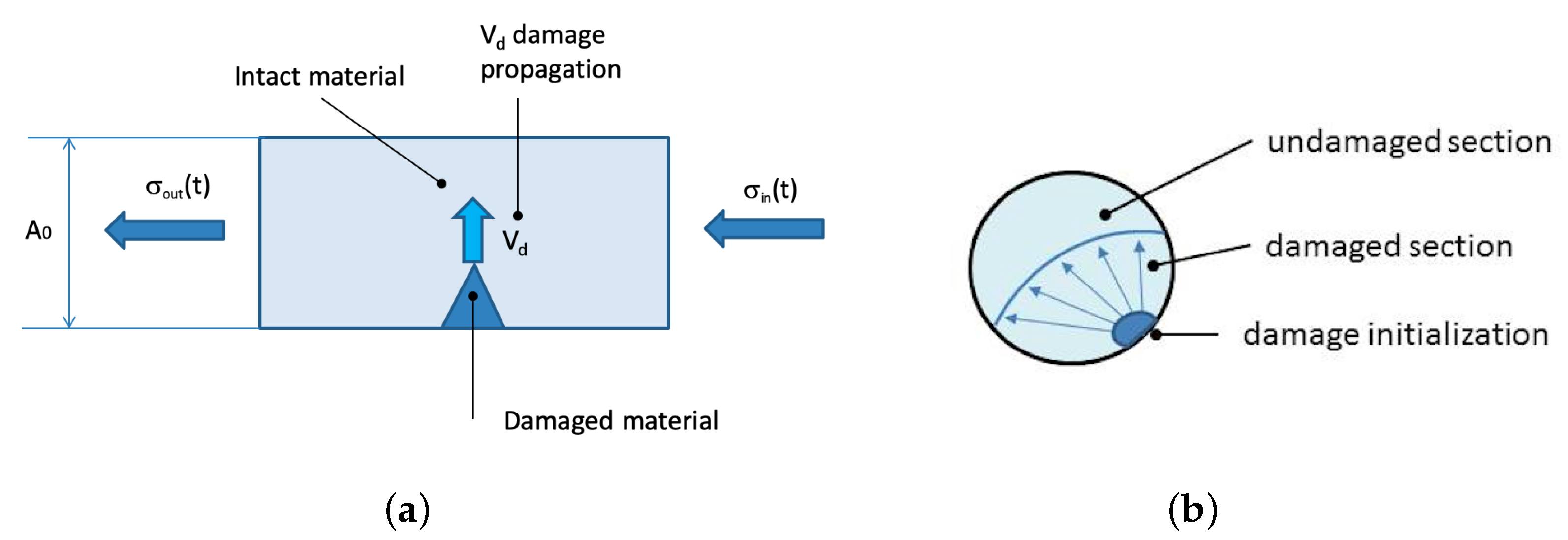
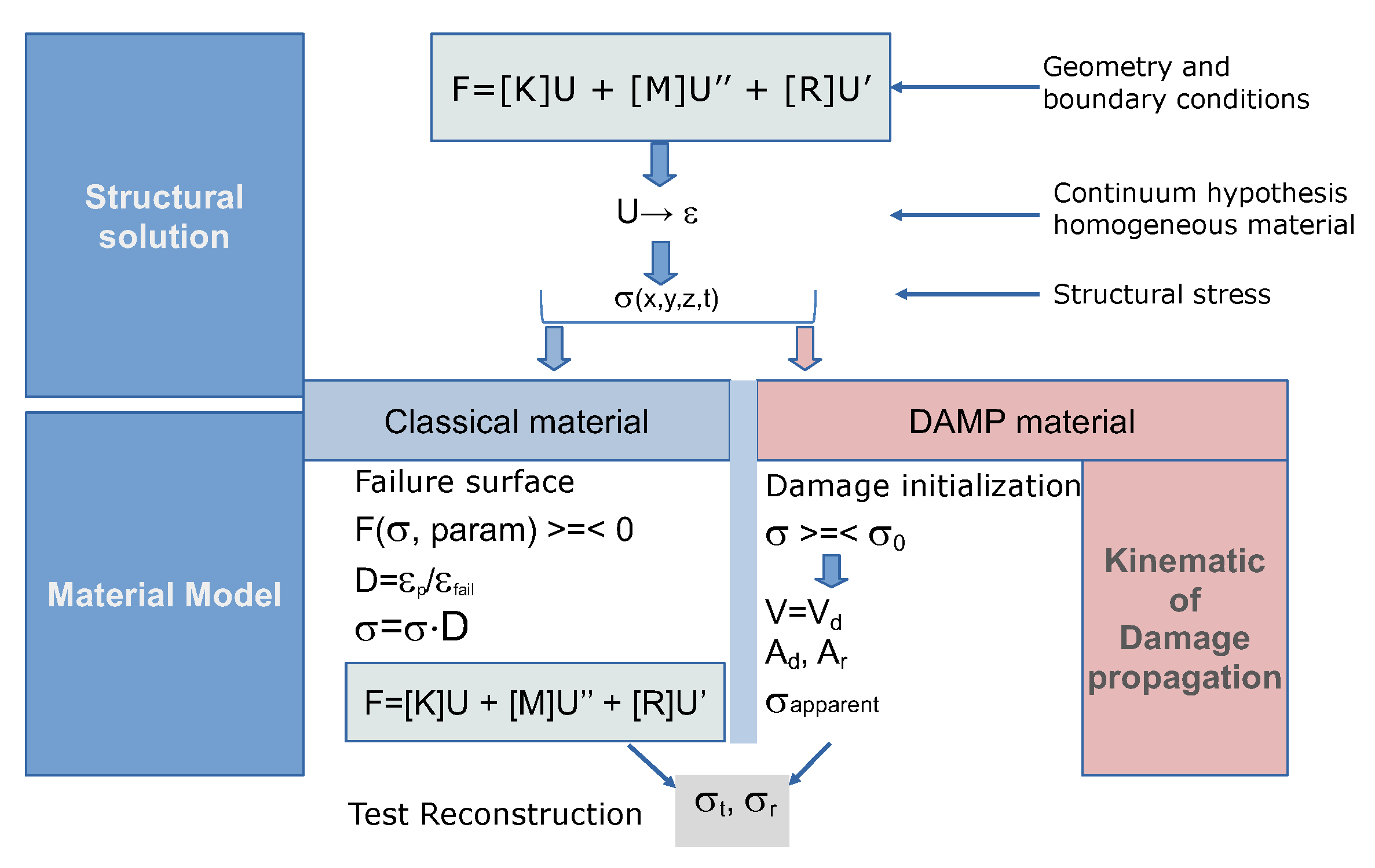

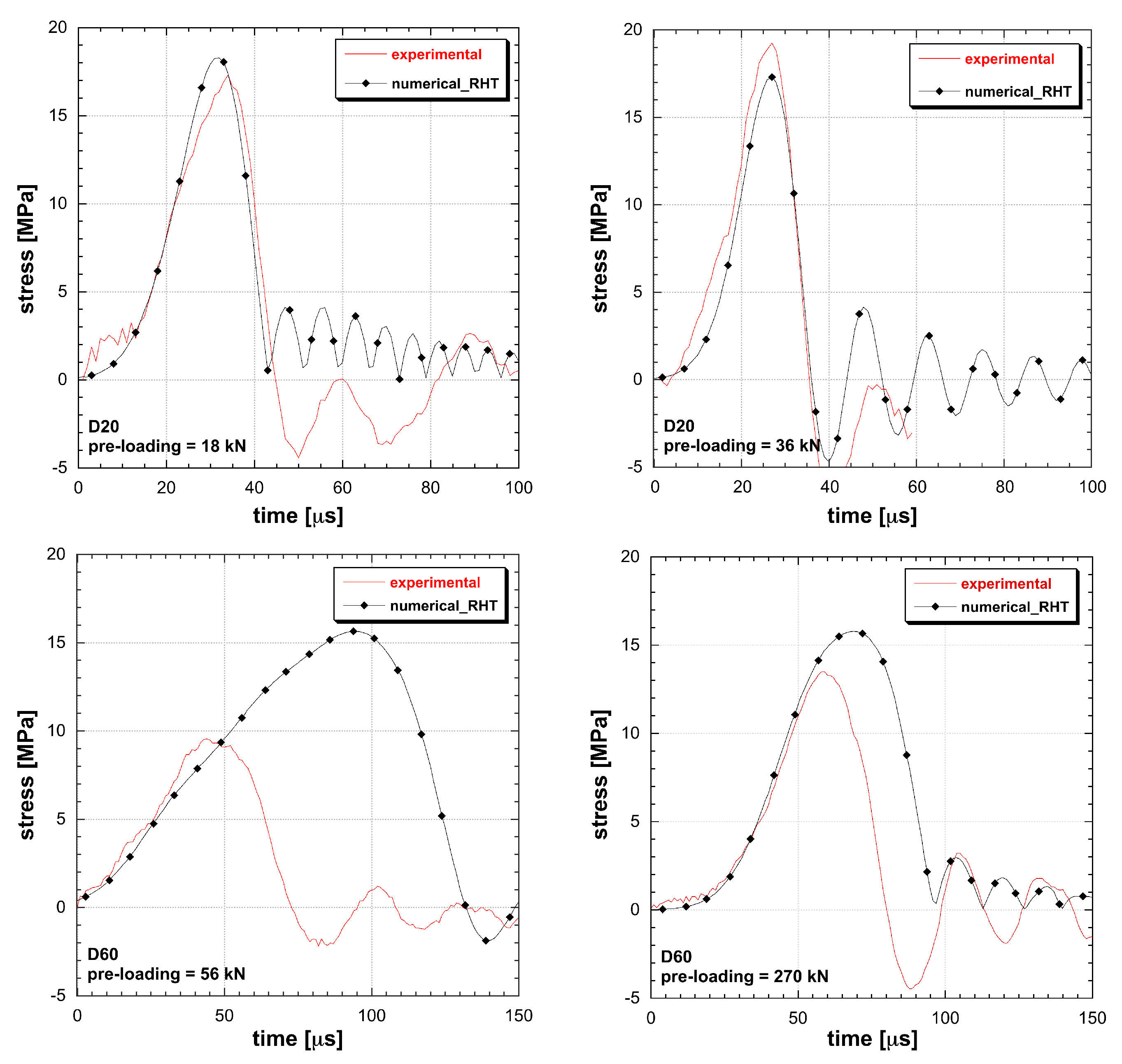
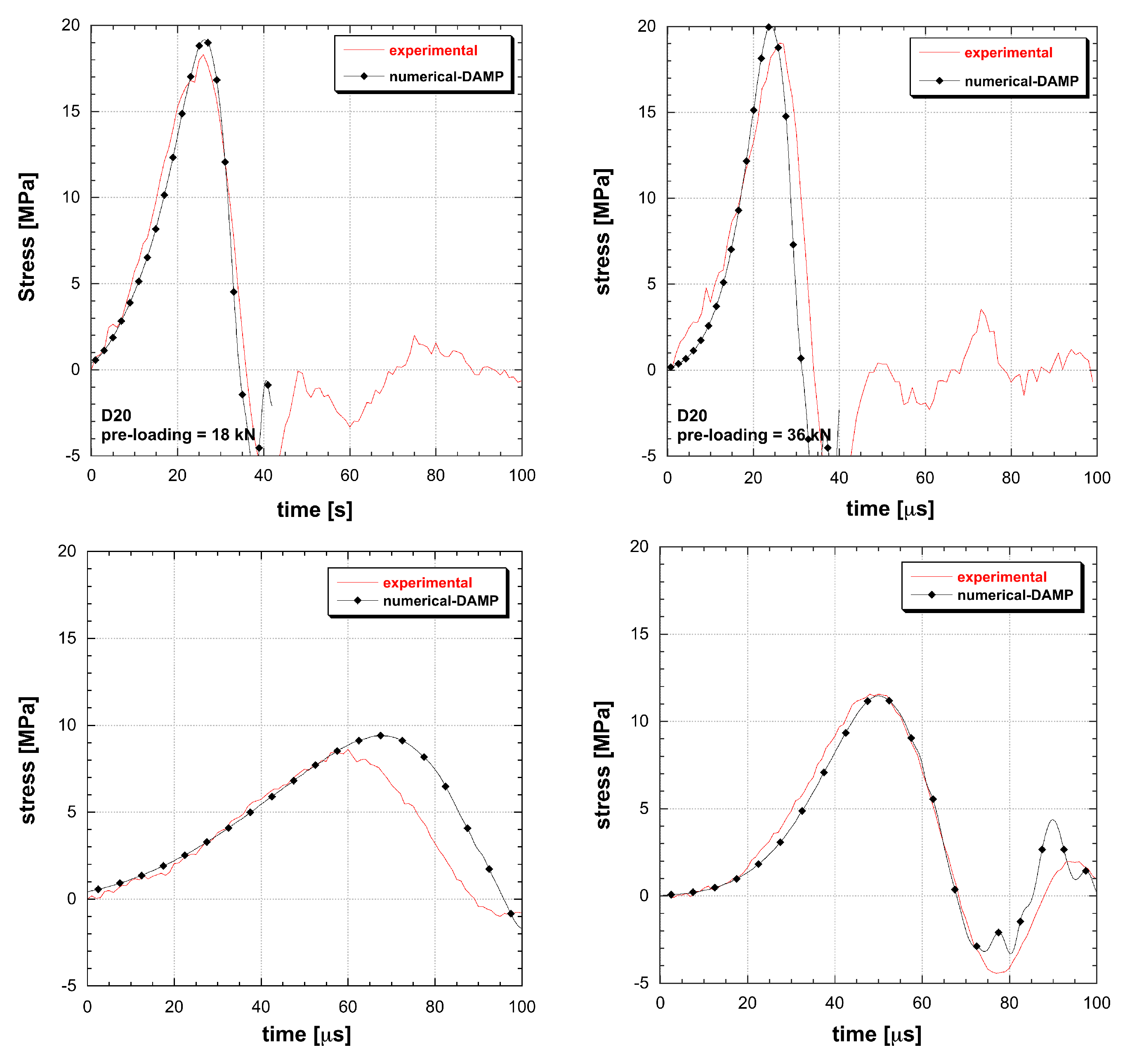
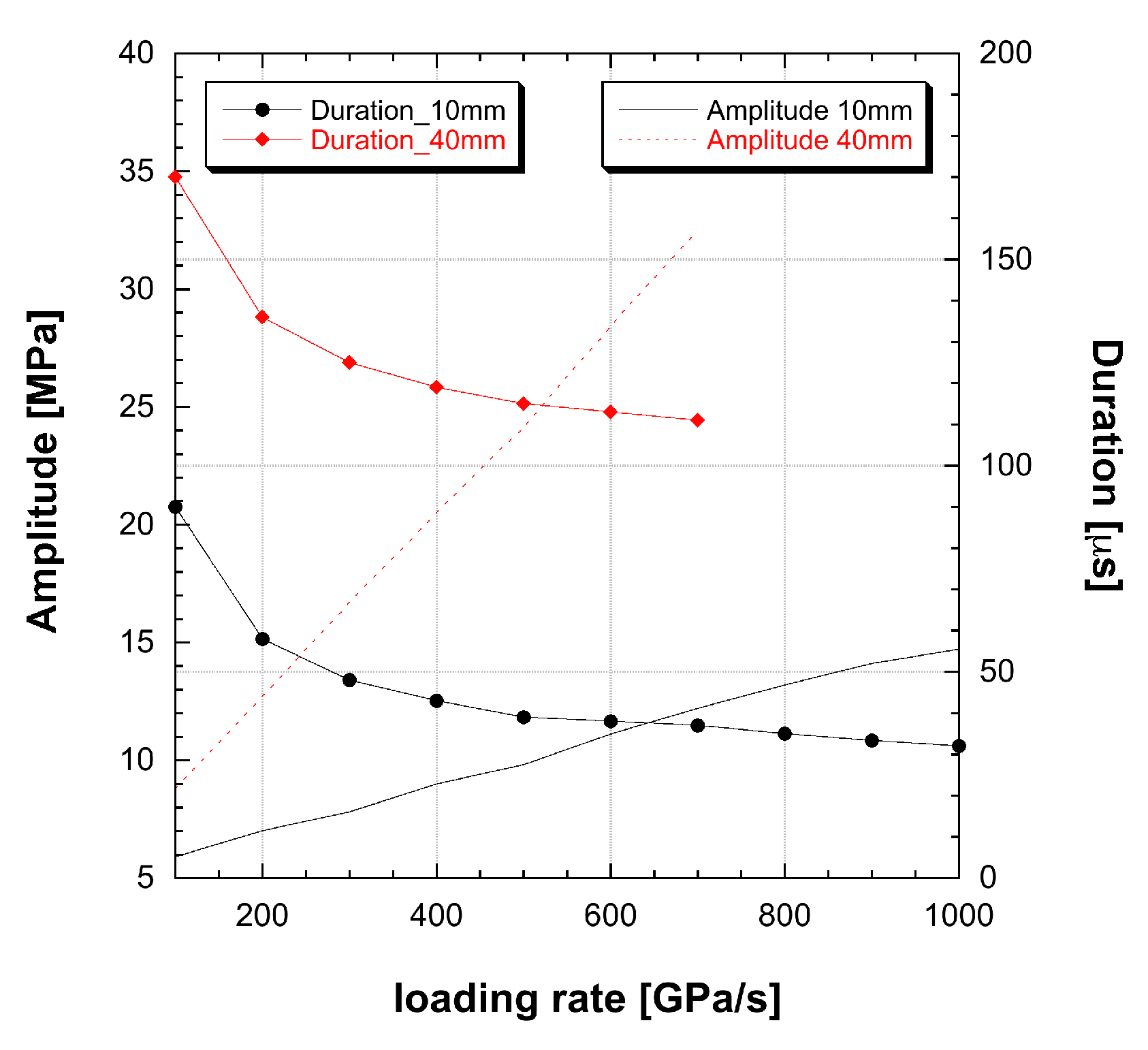
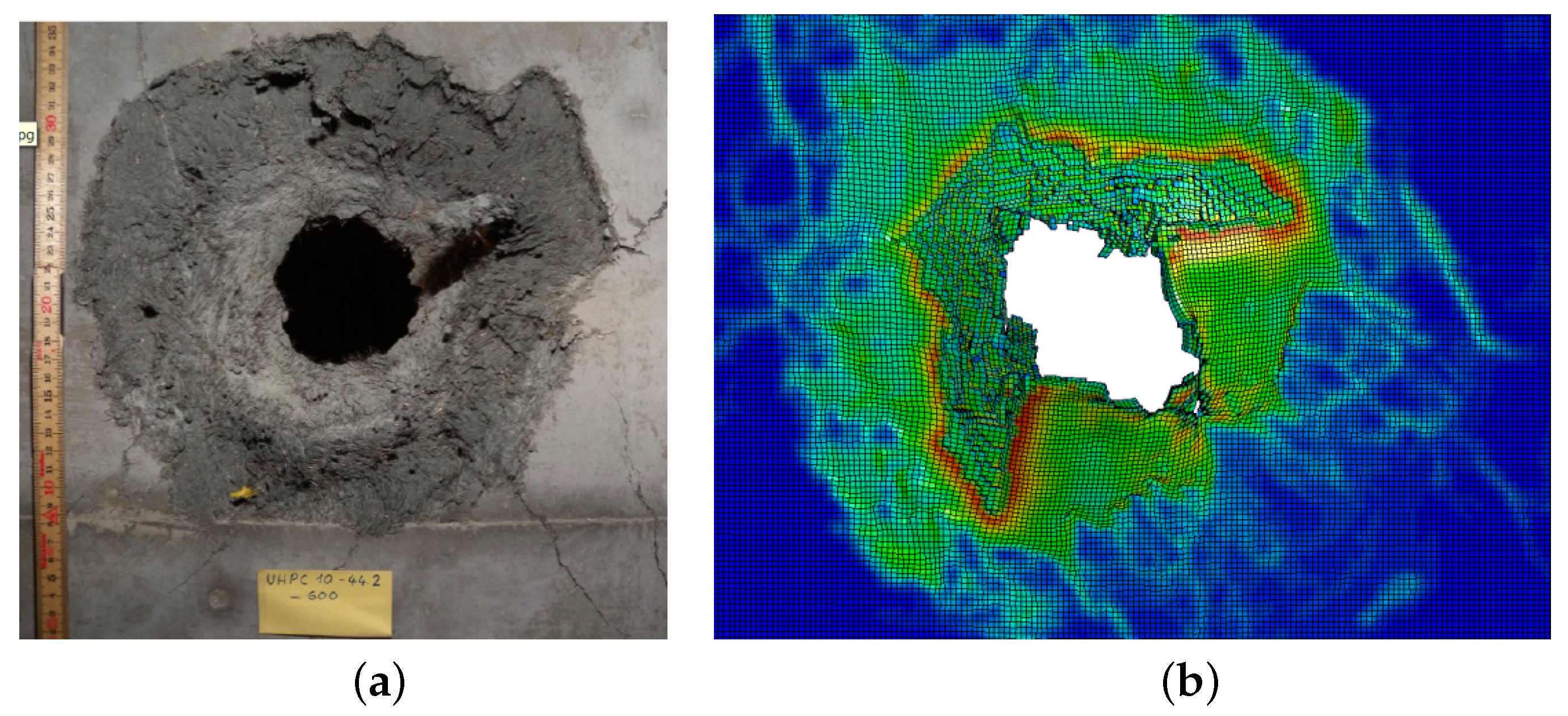
Publisher’s Note: MDPI stays neutral with regard to jurisdictional claims in published maps and institutional affiliations. |
© 2020 by the authors. Licensee MDPI, Basel, Switzerland. This article is an open access article distributed under the terms and conditions of the Creative Commons Attribution (CC BY) license (http://creativecommons.org/licenses/by/4.0/).
Share and Cite
Riganti, G.; Cadoni, E. Multiple Pseudo-Plastic Appearance of the Dynamic Fracture in Quasi-Brittle Materials. Materials 2020, 13, 4976. https://doi.org/10.3390/ma13214976
Riganti G, Cadoni E. Multiple Pseudo-Plastic Appearance of the Dynamic Fracture in Quasi-Brittle Materials. Materials. 2020; 13(21):4976. https://doi.org/10.3390/ma13214976
Chicago/Turabian StyleRiganti, Gianmario, and Ezio Cadoni. 2020. "Multiple Pseudo-Plastic Appearance of the Dynamic Fracture in Quasi-Brittle Materials" Materials 13, no. 21: 4976. https://doi.org/10.3390/ma13214976
APA StyleRiganti, G., & Cadoni, E. (2020). Multiple Pseudo-Plastic Appearance of the Dynamic Fracture in Quasi-Brittle Materials. Materials, 13(21), 4976. https://doi.org/10.3390/ma13214976





